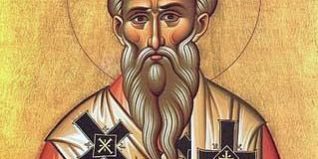In the months preceding His crucifixion, under the guidance of the Holy Spirit, Jesus was avoiding Judea and Jerusalem as much as possible (John 7:1-5). During this time, the religious authorities in Judea were seeking to kill Jesus (John 7:1-5). They had great influence and control in Judea, and they were ready to refer Jesus to Pilate for execution.[1] On the other hand, Herod Antipas controlled Galilee, and he was not actively pursuing Jesus.[2] It was much safer for Jesus to remain in Galilee.
John, the Elder, noted that Jesus had performed His first miracle at Cana of Galilee (John 2:1-12). He turned water into wine. John records that Jesus’s mother, Mary, was present for His first miracle. It is not clear, however, whether or not Jesus’s brothers were present at the wedding in Cana of Galilee. Thereafter, John records that Jesus performed a number of other miracles to include: healing the royal official’s son (John 4:46-53), healing the disabled man at the pool of Bethesda (John 5:2-9), feeding the 5000 (John 6:5-14), and walking on water (John 6:16-21). It appears that Jesus’s brothers had not witnessed any of these miracles. Most likely, they had only heard that he had performed certain miracles.
John recorded that Jesus’ brothers (among whom included James and Jude) were initially cynical, and they did not believe that their older brother was, in fact, the Christ. John wrote, “For not even His brothers believed in Him” (John 7: 5). As to the ministry of Jesus, the synoptic Gospels described His brothers as being on the outside looking in (Matt. 12:46-50; Mark. 3:31-35; Luke 8:19-21). In contrast, Jesus addressed His disciples as His true brothers. Jesus said, “For whoever does the will of God is My brother, sister, and mother” (Mark. 3:35).
About 6 months before His death, Jesus’ family was going to travel to the annual Feast of Booths (a/k/a Tabernacles) in Jerusalem. The Judean authorities were actively seeking to kill Jesus, and His brothers were encouraging Jesus to recklessly expose Himself to the danger (John 7:1-5). On the other hand, the Holy Spirit was guiding Jesus to use great discretion when going up to the Feast of Booths. The Holy Spirit always guides us to do a right thing in a right way. We must function in His timing, often with great sensitivity and discretion. Sometimes, it is a matter of life and death.
Jesus advised His brothers, “My time is not yet here, but your time is always ready” (John 7:6). It was not yet time for Jesus to go to the Feast of Booths, but it was time for them to believe that their brother, Jesus, was in fact the Son of God. Then Jesus said, “The world cannot hate you, but it hates Me because I testify about it, that it’s deeds are evil” (John 7:7). It was safer for them to be on the outside looking in, rather than actually being a follower of Jesus.
Ultimately, Jesus surreptitiously traveled to the Feast of Booths in the timing and direction of the Holy Spirit, not in the timing and direction of mere humans. During this festival, He successfully avoided His untimely death. He was not arrested until the following Spring, during the Feast of Passover. He still had more miracles to perform and messages to speak.
As mentioned by the Apostle Paul, Jesus made a point of appearing to James after He had been resurrected (1 Cor. 15:7). Thereafter, we see the brothers of Jesus gathered with the other disciples of Jesus in Jerusalem “continually devoting themselves with one mind to prayer” (Acts 1:14). The resurrection of Jesus had brought about a dramatic transformation of His brothers. Ultimately, after Peter moved to Asia Minor, James became the leader of the Jerusalem Church until his execution by stoning in AD 62 (Gal. 1:19, 2:9).[3],[4]
[1] Keener, Craig S. The IVP Bible Background Commentary: Second Ed. InterVarsity Press, 2014, p. 269.
[2] Ibid.
[3] Some sources says that James was first cast down from the pinnacle of the Temple, and after he survived the fall, was then stoned to death. See “James.” The International Standard Bible Encyclopedia: Volume Two: E-J, Gen. Editor Geoffrey W. Bromiley, et al., William B. Eerdmans Publishing Company, 1988.
[4] For further discussion regarding James and the Jerusalem Church, see my blog post, Peter: AD 30-60. https://eyestoseetherevelation.com/peter-ad-30-60/



